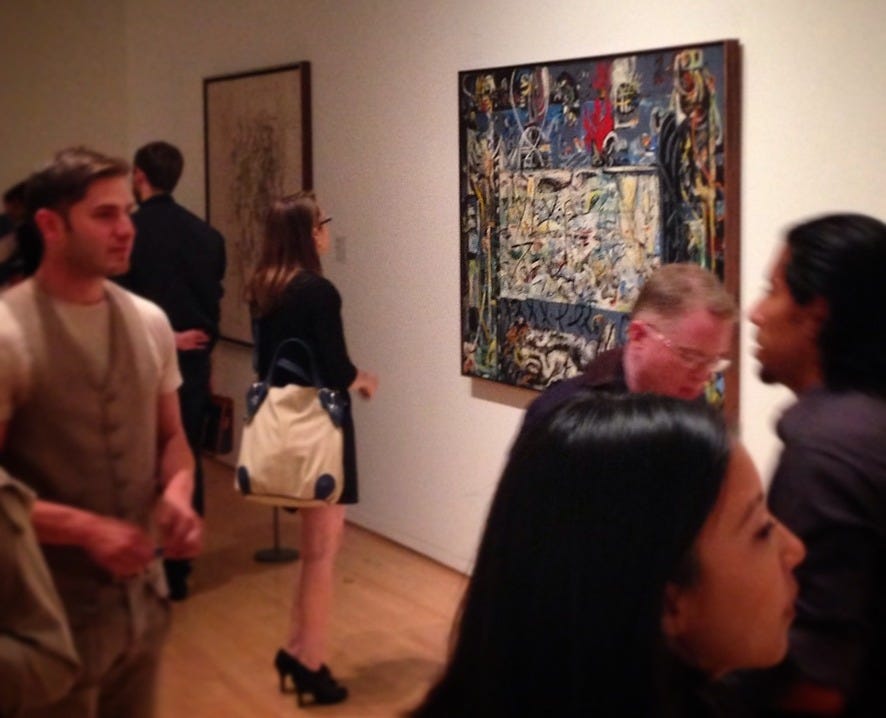As 2024 winds down, I thought it might be appropriate to share a reflection that I have been working on for quite some time. As many writers do, they start and stop pieces all the time. This reflection started as part memoir, part Substack entry, and part personal reflection. I recently saw the piece of art again in my new home and decided to share a meditation with all of you.
Three major reasons I love Christian Marclay’s The Clock:
⁃ My affinity towards deep time
⁃ Film as a median of specificity
⁃ The “you had to be there” kind of feeling
In June 2013, the week before the San Francisco Museum of Modern Art closed for a massive extension by Snohetta, the museum was open 24/7 for three days. My dream of sleeping over at the museum could finally come true. I lived in the Mission District at the time and it took me roughly 20-30 minutes to travel the two miles to the museum. It didn’t matter whether I biked, took the train, walked, or drove—traffic, construction, or other factors always made the travel time to the museum about 30 minutes. (And yes, I walk fast). I went to the museum six times during those three days. I acted as if I was losing a friend, grieving the museum’s closure for three years. So much can happen in three years? I didn’t know I would eventually become a museum guide after it re-opened or predict a global pandemic that would change the relevance of art museums forever. Time is a funny thing, constructed for us, so we can organize our lives, seemingly thinking we can control something. In an instant, time can turn on us. The hour glass of our lives are limited in scope. We don’t know when our personal hour glass will run empty.
As a sexual abuse survivor, I have run my life as if it was on borrowed time. I delayed my coming out as a gay man until 21 (late, some say, for my generation), layered with shame, fear, guilt, and feeling like most of my childhood and adolescence was stolen from me. There is quite a bit written about victims of abuse and the remnants of what is left behind: stolen memories, panic attacks, inability to build intimate relationships, and daily struggles of self-worth. In all, some times it felt like so much of my time has been wasted on those lost feelings. So much was stolen from me that I still spend time trying to piece back the mosaic of my life. In my 20s, I acted as if each day was the last grain of sand in my hour glass. This feeling of urgent time has yet to wane even in my late 30s. SFMOMA’s impending closure felt like a clarion call, urging me to bear witness to great art. I often get art urges – the desire to see great things - great operas, great actors, great paintings - it all meets the mark of urgency! I felt compelled to stand before Jackson Pollock’s 1943 gateway masterpiece, Guardians of the Secret, in the middle of the night. I call it a "gateway" masterpiece because it marks one of Pollock’s last semi-figurative works before fully embracing abstraction and his iconic drip technique. The Guardians serve as a bridge between his rejection of Thomas Hart Benton’s influence and the innovative style that would make him famous. Fittingly, the San Francisco Museum of Art (not quite Modern), was the first institution to host a Pollock exhibition in 1945, making Guardians its star work.

Little did I know, the museum being open 24/7 would introduce me to a work that lives in my memory and has helped me reflect on the way I live my life almost more than any other piece of artwork. You probably don’t know the artist and it is a piece you probably haven’t seen – Christian Marclay’s The Clock.
What truly matters is that you might think you could create something like it—if only you had the time, if only you thought it could make money, or if only you believed the vision mattered enough. Could you edit countless hours of cinematic history into a 24-hour behemoth of a film, with each moment perfectly corresponding to the time of day? I know I couldn’t. There isn’t enough acid in the world, and I’m neither focused nor patient enough.
The Clock acts as a prayer to me, like I am saying 10 Hail Mary’s after Confession when I was eight years old in church. The Clock puts you in a trance unsure of reality and unsure if you have said all 10 prayers. It’s likely the best piece of art the museum ever programmed—perfect timing, perfect messaging, and a perfect portal. Art museums rarely get everything right as institutions, but this was an exception. Most of the credit belongs to Christian Marclay, who dedicated three years to meticulously splicing other people’s creations into something entirely his own vision.
In San Francisco, I watched it during early mornings, late nights, and afternoons, and years later, I have pieced together memories with friends who had experienced it too. It’s the kind of piece that stays with you, even if you missed it. People in San Francisco knew they missed it, too. For those who witnessed it, we remember the time we saw it—not precisely, but vaguely, like an impression left by the line we waited in to see it.
The special reservation system spoke to its anticipated demand—Christian himself, must have known what it would become. The art world thrives on knowing things first, on being at the edge. Marclay built that edge for us, crafting the future through the film of the past.
My memories of the film itself feel like a curated, cinematic doom scroll—yet more rewarding and difficult to place my exact feelings. Marclay rewarded you for waiting, for staying, and for close looking. A car crash. A red light. Black-and-white film shifting into technicolor. A pocket watch. These fragments pierce the folds of my memory, distinct, and lasting. What else could achieve that so effectively?

Re-visiting The Clock at MoMA, New York City, Sunday, November 10, 2024:
I just watched The Clock from 10:30 AM to 11:30 AM. I had been disappointed the evening before, as I had tried to get into the gallery during a Member’s Preview. I knew how popular it would be and it is New York, so you have to fight for everything, every day. I was the first person in-line to enter the gallery on Sunday at 10 AM. My anticipation was felt by the museum workers already tired of weekend visitors. I chose to sit in the second row to the right of the middle couch. I had worn my running gear to the museum because I was planning on going on a run and see how long I could last in the gallery (there is no food and once you exit, you may not re-enter the gallery after you leave it). I made it 90 minutes.
From 10:30 to 11:00 AM, there was a noticeable focus on funerals and autopsies. Then, as the clock struck 11:00 AM, the piece emphasized public clocks—like Big Ben or large clocks in public spaces. This contrast got me thinking about the dual nature of time: it’s both private and public. There’s the personal act of checking your bedside clock in the morning versus the shared experience of seeing a clock in a public space. Time is deeply personal, tied to our daily routines, but it’s also communal, about meeting and coordinating with others. The hour also featured scenes with Marlon Brando, Gregory Peck, and even The Day of the Jackal (a film from my childhood). Walter Matthau appeared too, likely from I could glean was a scene from The Odd Couple. His comedic timing is brilliant—even a single scene of mere seconds showcases his genius. I knew more actors and more films this time.
It was interesting to observe the audience’s reactions, something I’d forgotten about in my first viewings. I was much more attune to the others. When something funny happens, like a Matthau scene, the gallery responded in unison with soft laughter. I almost felt like I was at a movie.
------------------------------------------------------------------------------------------------------
I had mentioned there were three reasons I loved The Clock: my affinity towards deep time, film as a median of specificity, and the “you had to be there” kind of feeling. These three aspects of the piece have stayed with me over the last decade. The piece has sometimes competing emotions of seriousness and humor. I can’t quite pin my entirety of my experiences down in type, but I do know that the clock is ticking. Time is passing us by. What will we do with it all? And as another year comes to an end, I am grateful to Marclay’s The Clock for reminding me that time is a construct. You don’t have to do those resolutions if you don’t want to. Throw out the goals, do something different. But, you might reflect on the year gone by. Reflections prove worthy, claim your time, claim your three hundred and sixty five days. And when we claim our time, we can play a bit more with our years, our memories, and we can push them to new edges.
Currently on view at MoMA through February 17, 2025.
More on The Clock: ArtNews












Share this post